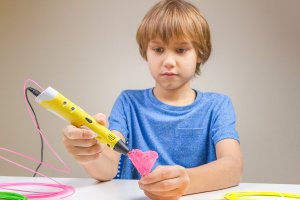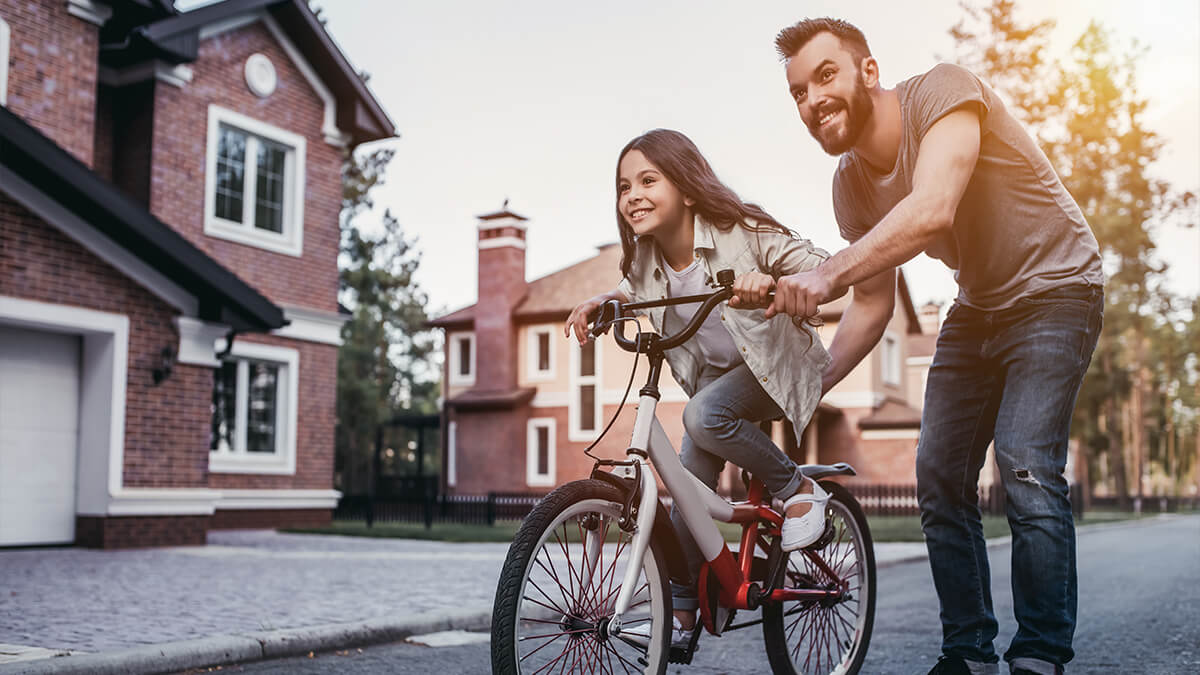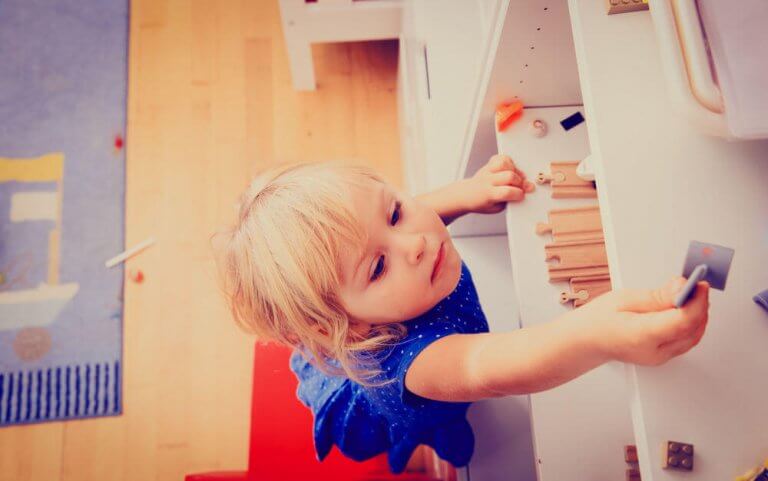Kinesthetic Learning: Definition and Benefits


Reviewed and approved by the psychologist María Alejandra Castro Arbeláez
As we grow up, we acquire new knowledge, training, and lessons in various ways. Taking advantage of techniques likes kinesthetic learning is indispensable.
Learning is the mental skill which we use to acquire skills, training, and preparation. For this to be possible, it’s important to have an appropriate guide. Having a guide makes learning much easier.
Obviously, the learner must also want to learn. If not, the effort is pointless.
Research has led to many advances in the study of learning and the development of new human abilities. In this case, we’ll be talking specifically about kinesthetic learning, which is one of the most effective and commonly-used techniques.
What Is Kinesthetic Learning?
Kinesthetic learning is learning through the sensations and movements the body uses to do a given activity. To experience this type of learning, each person must experience the action, and internalize the movements involved.
For this reason it’s sometimes known as tactile learning, because it requires contact with the object, action, or skill that you want to learn.
Some examples are riding a bike or playing with a toy. The child learns how to use these things through practice while in contact with the objects.
How to Implement Kinesthetic Learning
For this type of learning to work, you must use your body. Your muscle memory saves any action you can do. Via memories, experiences, and unconscious stimuli, we can put this type of learning into practice.
In kinesthetic learning you must use touch, movement, smell, and taste out of the many other abilities we have. Without them it isn’t possible to learn.

Characteristics of Kinesthetic Learners
People with this learning style tend to be very active and fidgety. For example, in school these children might walk around the room or do something else while the teacher is talking. They’re bored by theory; they prefer to touch everything and be active participants.
To understand this characteristic a little better, here’s an example: many people may be able to learn by reading or listening and watching videos. Using these techniques, they’re able to recall some information temporarily, but are likely to forget it in a few days.
However, it’s much different when we have a practice an ability, such as moving our fingers over the keyboard, without even looking. This can’t be erased from memory. It’s recorded at a deeper level which makes it harder to forget what we’ve learned.
“Kinesthetic learning is learning through the sensations and movements the body uses to do a given activity.”
There Are Other Ways to Learn
It’s important to point out that we don’t all learn the same way. Some people may be able to use sight or hearing to capture and internalize certain things.
These differences mean it’s important for each person to know how they learn best. Then they’ll know what techniques to apply going forward.

However, this doesn’t mean you’ll never use other methods to learn, such as sight or hearing. It just means that kinesthetic learning allows you to absorb information more quickly and meaningfully.
The questions to ask are: do I learn better by moving around and handling objects? Do I assimilate information better when I have a physical object, not a picture or a description?
If you do this little self-test and the answer is yes, your preferred learning method is likely kinesthetic. In fact, it’s the best way to learn for many people: over 55% of people learn most effectively this way.
As we grow up, we acquire new knowledge, training, and lessons in various ways. Taking advantage of techniques likes kinesthetic learning is indispensable.
Learning is the mental skill which we use to acquire skills, training, and preparation. For this to be possible, it’s important to have an appropriate guide. Having a guide makes learning much easier.
Obviously, the learner must also want to learn. If not, the effort is pointless.
Research has led to many advances in the study of learning and the development of new human abilities. In this case, we’ll be talking specifically about kinesthetic learning, which is one of the most effective and commonly-used techniques.
What Is Kinesthetic Learning?
Kinesthetic learning is learning through the sensations and movements the body uses to do a given activity. To experience this type of learning, each person must experience the action, and internalize the movements involved.
For this reason it’s sometimes known as tactile learning, because it requires contact with the object, action, or skill that you want to learn.
Some examples are riding a bike or playing with a toy. The child learns how to use these things through practice while in contact with the objects.
How to Implement Kinesthetic Learning
For this type of learning to work, you must use your body. Your muscle memory saves any action you can do. Via memories, experiences, and unconscious stimuli, we can put this type of learning into practice.
In kinesthetic learning you must use touch, movement, smell, and taste out of the many other abilities we have. Without them it isn’t possible to learn.

Characteristics of Kinesthetic Learners
People with this learning style tend to be very active and fidgety. For example, in school these children might walk around the room or do something else while the teacher is talking. They’re bored by theory; they prefer to touch everything and be active participants.
To understand this characteristic a little better, here’s an example: many people may be able to learn by reading or listening and watching videos. Using these techniques, they’re able to recall some information temporarily, but are likely to forget it in a few days.
However, it’s much different when we have a practice an ability, such as moving our fingers over the keyboard, without even looking. This can’t be erased from memory. It’s recorded at a deeper level which makes it harder to forget what we’ve learned.
“Kinesthetic learning is learning through the sensations and movements the body uses to do a given activity.”
There Are Other Ways to Learn
It’s important to point out that we don’t all learn the same way. Some people may be able to use sight or hearing to capture and internalize certain things.
These differences mean it’s important for each person to know how they learn best. Then they’ll know what techniques to apply going forward.

However, this doesn’t mean you’ll never use other methods to learn, such as sight or hearing. It just means that kinesthetic learning allows you to absorb information more quickly and meaningfully.
The questions to ask are: do I learn better by moving around and handling objects? Do I assimilate information better when I have a physical object, not a picture or a description?
If you do this little self-test and the answer is yes, your preferred learning method is likely kinesthetic. In fact, it’s the best way to learn for many people: over 55% of people learn most effectively this way.
All cited sources were thoroughly reviewed by our team to ensure their quality, reliability, currency, and validity. The bibliography of this article was considered reliable and of academic or scientific accuracy.
- Ariola, A., & Pérez, H. (1999). Inteligencia emocional: Teoría y praxis en educación. Revista Iberoamericana de Educación, 15, 1-5. https://sites.google.com/site/gabybiosciz/Home/Inteligenciaemocionaljunio24.pdf
- Baena, G. (2005). Como desarrollar la Inteligencia emocional. Guía para padres y maestros. Sevilla: Ed. Trillas
- Cruz, P. C. (2014). Creatividad e Inteligencia Emocional.(Como desarrollar la competencia emocional, en Educación Infantil, a través de la expresión lingüística y corporal)/Creativity and Emotional Intelligence. (How to develop emotional competence, in Preschool, through linguistic expression and body language). Historia y comunicación social, 19, 107-118. https://core.ac.uk/download/pdf/38816745.pdf
- Gardner, H. (1987). La teoría de las inteligencias múltiples. Santiago de Chile: Instituto Construir. http://www.institutoconstruir.org/centrosuperacion/La%20Teor%EDa%20de%20las%20Inteligencias%20M%FAltiples%20(cortad).pdf
- Goleman, D. (1996). Inteligencia Emocional. Barcelona: Kairós.
- Mercadé, A. (2016). Los 8 tipos de inteligencia según Howard Gardner: la teoría de las inteligencias múltiples. http://materialestic.es/transicion/apuntes/Los.8.tipos.de.inteligencia.segun.Howard.Gardner.pdf
This text is provided for informational purposes only and does not replace consultation with a professional. If in doubt, consult your specialist.








